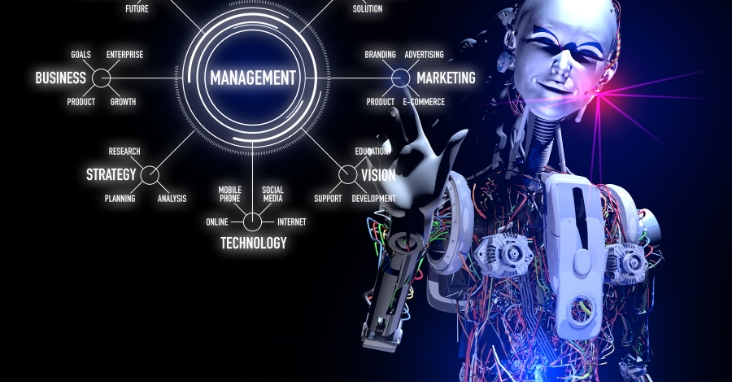
AI to Manage Projects
Digital agencies are innovators, and it’s not surprising that there is a lot of excitement about AI’s potential transformation. Are we running before AI can walk?
You wouldn’t get behind the wheel of an autonomous vehicle if you didn’t know how to drive it, even if you had AI-enabled. No car company claims to have created a fully autonomous car. As it stands, there is always a driver. We are still responsible for the outcome. Using AI does not mean we can outsource our judgment and agency. It’s a tool, and we need to ensure that it is used well.
Sometimes, we want to implement something that looks great and saves us time. But sometimes, we don’t stop to think about whether we are using it properly. We don’t realize its potential or that it could go wrong.
We can learn some best practices and knowledge that will help us get the most from AI without falling for the pitfalls.
AI in Agencyland – What Could It Do For Us?
AI is widely used for tools that can tackle specific tasks. You may have seen one of the many AI copywriting programs that has recently emerged. These apps are getting more sophisticated every day, even though it is still necessary to have a human review the AI-generated copy.
This is an example of how an AI can write the title of an article. The AI was given the text and provided with suggestions for blog titles. Although some of the suggestions were slightly off-topic, most were perfect. They sounded almost like they were written by a human writer.
AI copywriters sound natural. This is partly due to the abundance of data available on how language models can be “trained”. Consider the amount of text available online. This is all possible language data. Google’s BERT natural-language model is based on data that includes all of English-language Wikipedia (a staggering 2,500 million words).
However, vast amounts of language data are only one thing. What if an AI could understand more specific contexts to your company’s needs? Perhaps your designers and copywriters would like to have some assistance from AI. Can project managers and studio managers do the same?
This is a bigger task. This is a much bigger task. AI must be trained using datasets. You will need to have data from past projects in order to train an AI that can assist with project operations. Any agency that has been in operation for a while will have significant data about the way their projects are run. It might not be useful data.
Bad data is the greatest enemy for any AI developer. AI cannot approach and evaluate information critically because it is not conscious. AI is unable to make an assessment of whether or not a piece information is faked or embellished. This is something that many people (but not all) feel. AI cannot correct course corrections because humans can fact-check information. AI can’t.
Here is the classic programming aphorism: “Garbage out = garbage in”. An AI cannot tell if it is being trained on inconsistent or patchy data. This bad data will be accepted by the AI and it will learn from it. The end result will be an artificial intelligence that reproduces these issues.
This is how Amazon created an AI for hiring that discriminated against women. It’s also how the UK government downgraded the exam results students from lower socioeconomic backgrounds. Bad data led to bias.
Both of these extreme cases have extremely unfair consequences. Although AI is not likely to bring the same ethical responsibility to project management, they do illustrate a crucial point. You can make an AI more harmful than beneficial if you use poor data. This could look like unhelpful estimates and inaccurate predictions in a project management context. It’s easy to see the trouble you could get into if you follow these suggestions blindly.
Now that you are able to train AI using good data, let’s ask: What makes good data?
Good Data is the Only Way to Get It
How confident do you feel that your project-based organizations are gathering quality data about their projects? What could that look like? You might also track project duration and value and which projects exceed budget or go over time. What tasks are most likely to be overrun? What skills are overused and underutilized most often? What are the most common problems that arise during projects? Is there a pattern?
This type of data can be combined to give you a clear picture of the project’s operations. If you have such detailed data, you could be able to use it to provide project management support. It would be great if you could receive a timely warning in case of a critical task that has been delayed or overrun.
This vision is possible with the AI technology that is currently being developed. However, it is clear that AI’s project management recommendations will only be reliable and useful if they are based on accurate data. With so many data points to be captured, the chance of error is very high.
On average, 47% of newly created Data records contain at least one critical error. Most people don’t intuitively understand the importance of data and aren’t very skilled at manually entering data. Our eyes can miss fields, colleagues from different countries may enter dates in different formats, and we might make typos. The many ways that we can make data input mistakes are just as unpredictable as our own.
Data input does not play to our strengths. Programs that are designed to process and collect data will almost always do a better job than people. A well-designed user interface that allows for consistent data entry can make all the difference.
The best way to get reliable project data is to use a system designed for this purpose to manage your projects. Forecast was designed with data integrity in view, especially for machine learning. The UI encourages consistent, simple entries, such as time registrations, to ensure that data collection is as automated as possible.
Forecast allows you to access all of your project data in one place, making it ideal for machine-learning purposes. The Forecast system “learns” from you how to run your projects as you interact with them over time. Forecast is able to do big things because of this high-quality project data. It is now much easier to manage complex agency projects.


